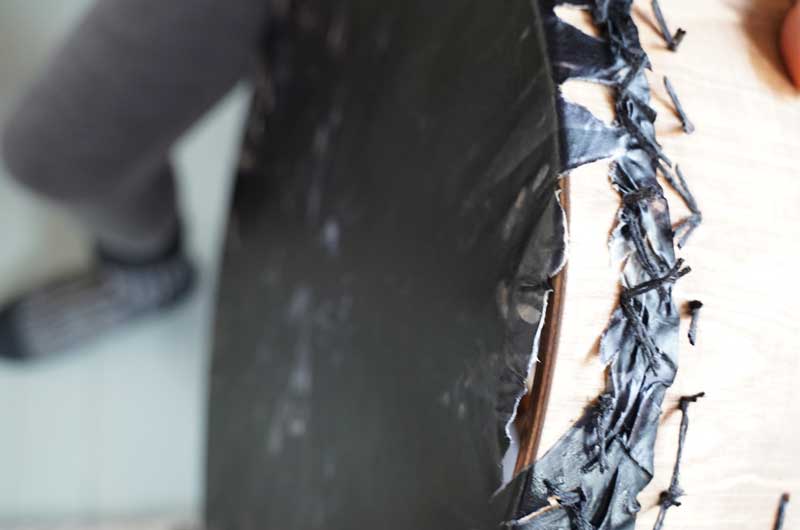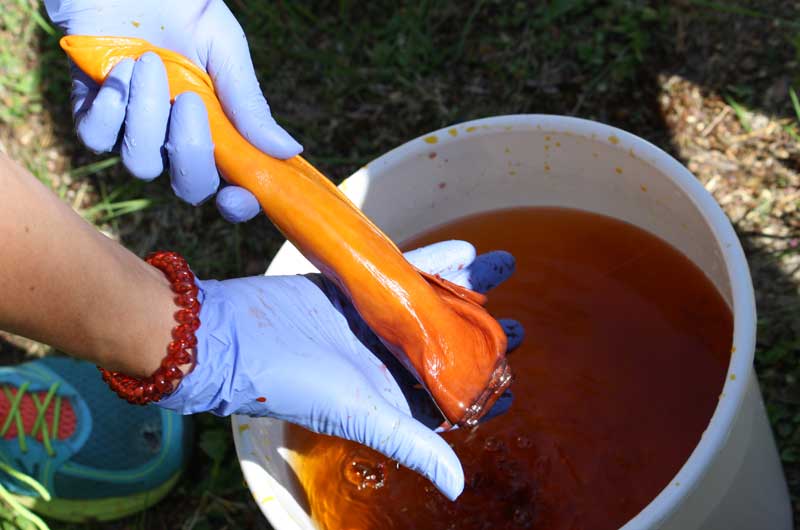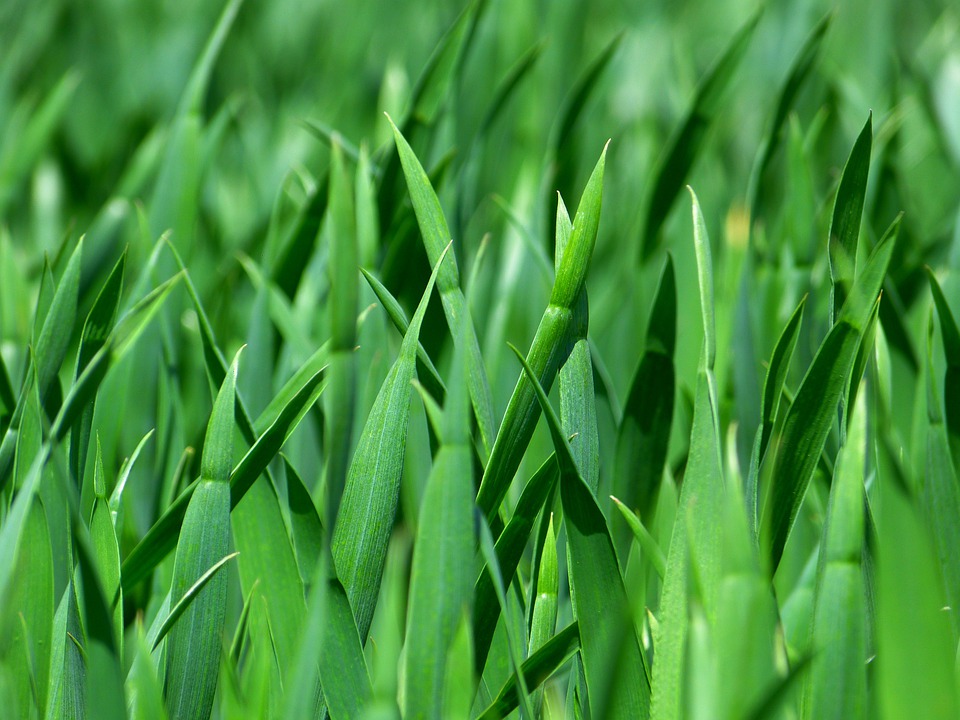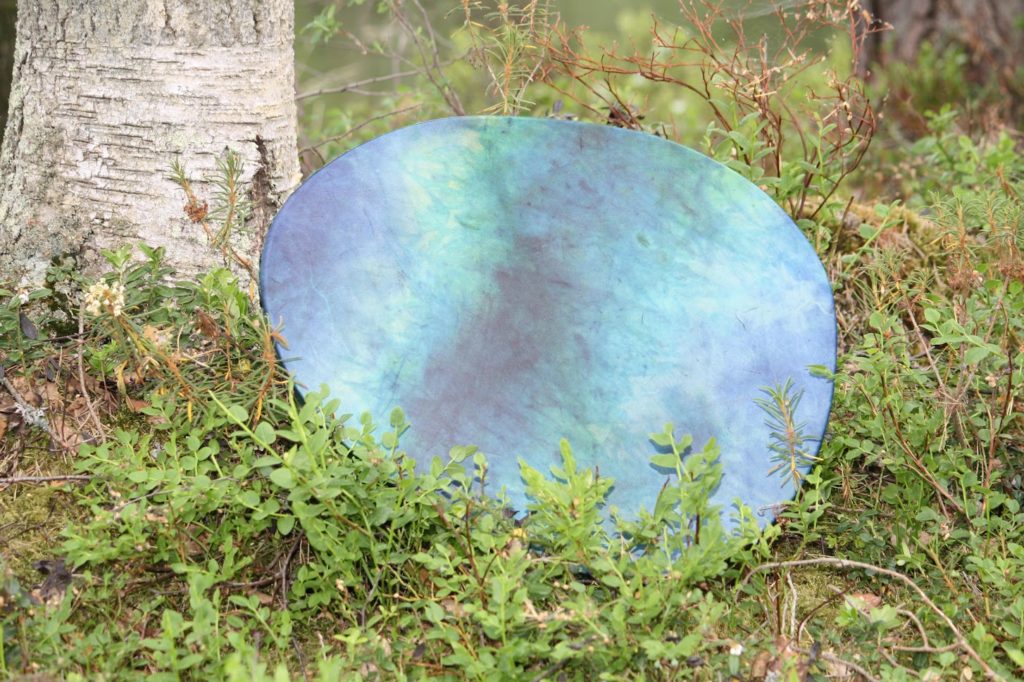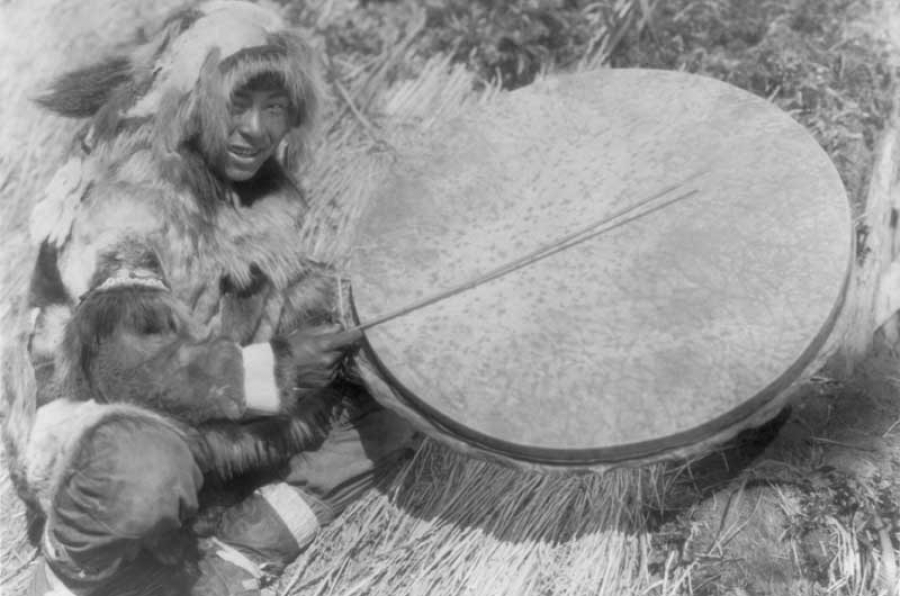The shaman drum is a durable product, that brings joy for many years, as long as you remember these few things!
The drum’s skin is genuine leather, which tightens and loosens according to humidity. It “lives” based on the surrounding conditions. If the air is humid, the membrane is loose. And if the humidity increases, the drum won’t produce sound but will flap. When the leather dries, it returns to its original state.
During the manufacturing process, we take this into account as best as possible. Unfortunately, in Finland, the range of variation (humidity/temperature) is so extreme that reindeer leather faces challenges. If we make the drums looser, they won’t produce sound.
If the air is very dry, such as during the summer season and severe cold, the leather tightens. You can notice this when the drum’s sound rises and becomes more like “ping-ping.” When it’s extremely dry, usually below 30%, the leather is at risk of breaking.
Here are some reminders of how to preserve the drum through the worst cold peaks of the winter season:
- Keep it in a cool and humid storage space.
- Use a humidifier near the drum.
- Keep the drum well-oiled.
- Monitor the drum casually —> don’t forget it in the cabinet or on the wall.
- A quick spray from a spray bottle, a damp wipe.
- Seal it in a plastic bag with a damp towel.
- You can also store it outside, just make sure, for example, that birds don’t peck at the membrane.
- A last-minute tip if the leather is at risk of breaking —> cut the strings. You can repair the strings, but not the leather.
What happens when the leather tightens?
As the drum’s leather tightens more and more, it eventually tears. And torn leather cannot be repaired. So, the situation should be addressed before it breaks, which means monitoring the drum daily and especially in extreme conditions.
When you reach the point where the leather holes are already stretching significantly, definitely put it in a moist plastic bag, see instructions in the video. Cutting the strings also helps prevent further damage after the cold season.
The first winter is the most challenging for the drum; that’s when you truly see how well it endures. If it withstands the first winter, it will likely endure in the future.
Usually, large (and oval) drums are more vulnerable because of their large surface area and the tension on the leather.
What do you do when the leather tears?
Sometimes the tear is so small that it doesn’t affect playing. However, usually, the option is to replace the leather. Or, if you manage to cut the strings before the leather breaks, the leather might still be usable after the cold season. Note, though, that sewing the leather when dry is not possible; it requires some knowledge for repairs.
But every drum and torn leather are unique, so there’s no universal advice to give.
We provide a one-year warranty for the drums we sell. The warranty covers manufacturing and quality defects. Damages caused by excessive drying or improper storage are not covered by our warranty.
Feel free to contact us when your drum breaks, even if you’ve taken care of it to the best of your ability.
Through us, it’s possible to purchase a new leather for your drum and thus renew it. And, of course, we also repair broken drums.
So, take care of your drum, play it, as both the drum and your mind and soul will appreciate it.
Wishing you a wonderful start to the new year 2024!

